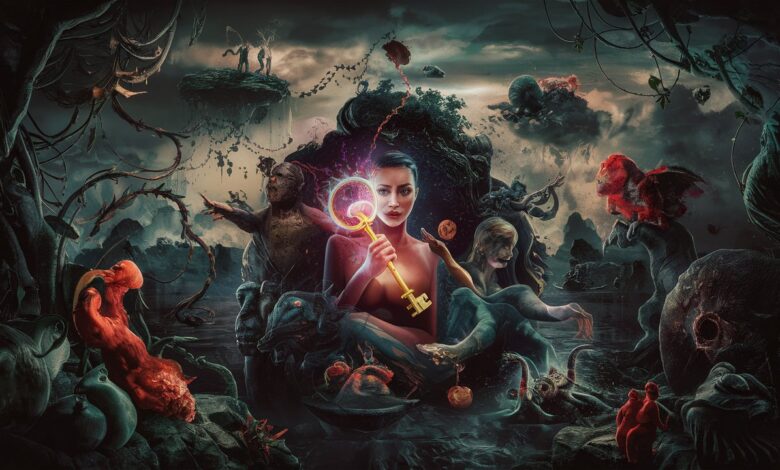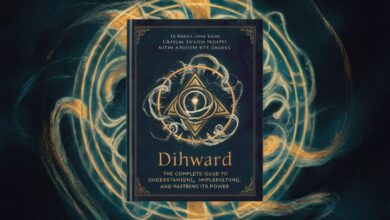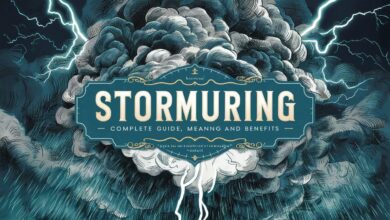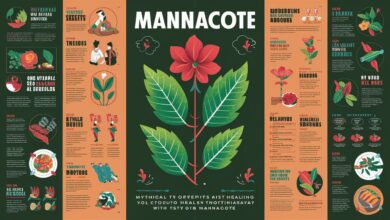TabooFantazy: Exploring the Hidden Desires and Unspoken Realms of the Human Mind

In a world driven by curiosity, imagination, and desire, TabooFantazy stands as a fascinating concept that challenges traditional boundaries and embraces the art of exploring what lies beyond the ordinary. This term captures the essence of forbidden fantasies, psychological depth, and the power of human imagination. In this article, we dive deep into the meaning of TabooFantazy, its origins, psychological aspects, cultural impact, and how it reflects the uncharted territories of human thought.
Understanding the Essence of TabooFantazy
TabooFantazy is more than just a phrase; it is a mirror to the hidden fantasies and desires that individuals often keep suppressed due to social norms and cultural expectations. The word “taboo” denotes something prohibited or socially unacceptable, while “fantasy” represents imagination, desire, and creative thought. Together, they form a concept that captures the duality of human nature—the struggle between what society deems acceptable and what the human mind secretly yearns for.
This fusion gives rise to a realm of imagination where the rules of the real world do not apply, allowing individuals to explore emotions, scenarios, and ideas that defy moral conventions. Through art, literature, and media, TabooFantazy becomes an expression of freedom—an invitation to step into the unknown.
The Psychology Behind TabooFantazy
The psychology of TabooFantazy is rooted in the human subconscious. Psychologists suggest that forbidden thoughts often carry more power precisely because they are repressed. When something is labeled as “off-limits,” it becomes more intriguing and desirable. This is known as the forbidden fruit effect.
Within this framework, TabooFantazy represents a safe mental space where people can process their fears, desires, and hidden emotions without acting them out in reality. It allows for exploration of power, vulnerability, control, and liberation—all essential aspects of human psychology. This mental play not only provides emotional release but also promotes self-awareness and creative growth.
Cultural Representation of TabooFantazy
Across history and cultures, TabooFantazy has manifested in various forms. From mythological tales that defied divine order to modern digital art and storytelling, societies have always used imagination to explore what lies beyond moral constraints. Ancient literature such as Greek mythology, Eastern folklore, and Gothic romance often contained themes that could be classified as taboo by modern standards.
Today, pop culture, film, and literature continue to push the boundaries of imagination. Works by artists and writers often incorporate taboo elements to challenge perceptions, evoke emotion, and question societal norms. Through these expressions, TabooFantazy becomes a tool for cultural evolution—an artistic rebellion against conformity.
TabooFantazy in the Digital Age
With the rise of digital platforms, the exploration of TabooFantazy has entered a new era. The internet provides anonymity, creativity, and accessibility, allowing individuals to express their fantasies through art, writing, and virtual communities. Online forums, storytelling platforms, and immersive digital experiences have become sanctuaries where people can share and explore imaginative worlds without judgment.
However, this evolution also brings challenges. The digital realm blurs the line between fantasy and reality, raising questions about ethics, privacy, and consent. Responsible engagement with TabooFantazy content requires awareness, empathy, and respect for boundaries.
The Artistic Dimension of TabooFantazy
Art has always served as a medium for expressing the unspoken. In painting, sculpture, photography, and literature, TabooFantazy acts as a muse that inspires creators to challenge aesthetic and moral conventions. Surrealism, symbolism, and abstract expressionism often embody taboo themes that provoke thought and emotion.
From Dali’s dreamlike distortions to modern digital fantasy art, artists use taboo concepts to visualize inner conflict, hidden beauty, and forbidden curiosity. These creations open the door to dialogue and self-reflection, encouraging viewers to confront their own subconscious landscapes.
TabooFantazy and Personal Growth
While TabooFantazy might sound controversial, it can also be a powerful instrument of personal development. By confronting the parts of ourselves that society asks us to hide, we gain emotional maturity and self-understanding. Imagination becomes a bridge between repression and expression, turning inner tension into creative force.
Embracing TabooFantazy responsibly can help individuals redefine personal limits, understand their emotions, and cultivate acceptance of human complexity. It teaches that not all fantasies are meant to be lived—some exist simply to be understood.
Ethical Exploration of TabooFantazy
Engaging with TabooFantazy responsibly involves understanding the distinction between thought and action. Fantasy, when explored ethically, is a mental exploration, not a behavioral endorsement. The goal is self-expression, not harm. Maintaining this awareness ensures that imagination remains a source of inspiration rather than transgression.
Creators and consumers alike should approach taboo-themed content with a mindset of respect, consent, and artistic integrity. By doing so, we preserve the creative freedom that makes TabooFantazy such a compelling and transformative concept.
How TabooFantazy Shapes Modern Expression
In modern culture, TabooFantazy influences everything from fashion and music to virtual storytelling and AI art. Artists and writers harness the power of the forbidden to evoke emotion, provoke discussion, and inspire innovation. It is through breaking barriers that creativity thrives.
The concept has also entered psychological wellness, where therapists and researchers use fantasy exploration to help individuals process trauma, anxiety, and repressed feelings. By turning taboo into art, people reclaim control over their narratives.
Conclusion: Embracing the Infinite Depth of TabooFantazy
TabooFantazy is not merely about crossing lines; it’s about understanding why those lines exist. It represents the eternal dance between curiosity and caution, desire and restraint, expression and suppression. To explore it is to explore the deepest corners of the human soul—where imagination reigns free and judgment fades away.
By acknowledging the power of fantasy, we allow creativity to flourish and the mind to heal. The essence of TabooFantazy lies in its paradox: it is both forbidden and freeing, dark yet illuminating, dangerous yet deeply human.
FAQs About TabooFantazy
1. What does TabooFantazy mean?
TabooFantazy refers to the exploration of forbidden or socially restricted desires and ideas through imagination, art, or storytelling. It is the merging of the taboo and the fantastical.
2. Is it normal to have TabooFantazy thoughts?
Yes, it is entirely normal. Such fantasies are part of human psychology and do not define one’s moral character.
3. How can TabooFantazy be explored safely?
Through creative expression—writing, art, or fantasy role-play—while respecting ethical boundaries and personal consent.
4. Why is TabooFantazy important in art and culture?
It challenges norms, inspires creativity, and allows individuals to express complex emotions and ideas that might otherwise remain suppressed.
5. Can exploring TabooFantazy improve mental health?
Yes, when approached responsibly, it can foster emotional understanding, relieve tension, and encourage self-discovery.



